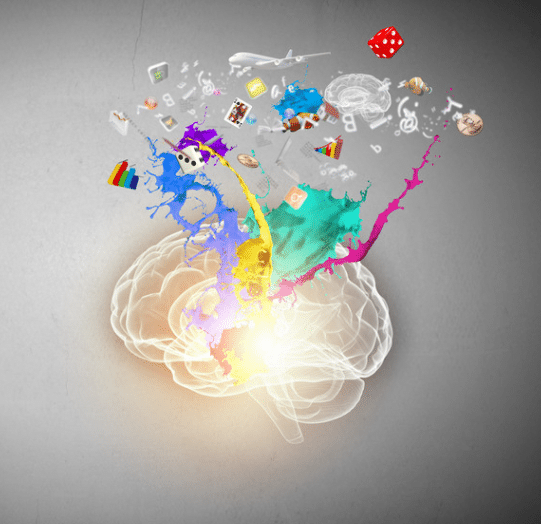Have you struggled to remember words and expressions in a new language? Do you need help retaining information? Mnemonic learning could be your missing piece. This technique uses patterns and associations to help you recall facts effortlessly. Learning a new language is a challenging yet rewarding journey. However, memorizing new words and grammar rules can be a daunting task. Many language learners resort to conventional techniques like flashcards and rote learning that only lead to temporary retention. If you want to remember new concepts and vocabulary more effectively, then mnemonic learning is the way to go. The Mandarin Show takes the mnemonic learning technique to a new level with shocking skits and funny stories to help you learn Chinese FAST!
What is Mnemonic Learning?
Mnemonic learning is a memory technique that creatively uses acronyms, imagery, and association to remember new information. The ancient Greeks first used it, where memory experts used it to remember long poems and speeches. However, it is still widely used for learning languages, history, math, and medical terms. The basic principle of mnemonic learning is to link new information to something you already know, making it easier to recall when needed.
How Does It Work?
Mnemonic learning creates an association in the brain between the new information and something you already know. Research has shown that we store memories better when they are connected to emotions, senses, or personal experiences. Using mnemonic devices engages multiple parts of your brain, making the information more meaningful and, therefore, more easily retrievable. Additionally, mnemonic devices can help you reduce the cognitive load, freeing up mental space to concentrate on other aspects of language learning, such as grammar or pronunciation.
For example, when learning Mandarin Chinese, you can create a mnemonic device to remember the word for “cold” or “lěng” (pronounced lung). You could associate the word with our skit of someone eating a dish of real cold lung! Creating an association between the image and the new word makes you more likely to remember it later. The more absurd or creative the connection, the easier it is to remember.
Why is Mnemonic Learning Useful for Mandarin Chinese?
One of the main benefits of mnemonic learning is that it can help you learn vocabulary faster. By using mnemonic devices, you can associate new words with mental images that stick in your head. Mandarin Chinese is a tonal language, meaning that the context of a word can change depending on how it is pronounced. This can make it challenging to remember new words and phrases. However, mnemonic learning can help overcome this problem by creating a visual link to the word’s pronunciation.
For example, to remember the word for “go” as “chu” (pronounced choo), you could associate it with a picture of a train fast on the tracks. By creating an association between the picture and the word’s sound, you are more likely to remember it later.
Furthermore, mnemonic learning can also help in remembering the order of strokes when learning Chinese characters. By creating an association between each stroke and something you already know, you are more likely to remember the order in which they appear. For example, the Chinese character for “mountain” or “shan” can be remembered by creating a story that links the first stroke to a tree and the second stroke to a person’s legs. By creating an association between each stroke and a visual image, you are more likely to remember the order in which they appear.
Finally, mnemonic learning is a fun and creative way to learn a language. Whether you’re a visual learner or an auditory learner, you can use multiple mnemonic devices to suit your learning style. Mnemonic devices can also spark your imagination and help you unleash your creativity. Moreover, funny or outrageous mnemonic devices are more likely to stick in your brain than plain, boring ones. So why not have a giggle while you learn your target language?
The Mandarin Show Method
The Mandarin Show brings everything together to create an outrageously easy way to learn Chinese. These steps will have you learning Mandarin in no time!
- Creativity: The more imaginative and outlandish your mnemonic device, the more memorable it will be. Our creativity runs wild when forming connections!
- Vivid Imagery: Quick videos create mental images that are vivid and intense. The stronger the visual, the easier it is to recall.
- Incorporating Emotion: Emotions have a substantial impact on memory. If a mnemonic device induces a strong emotional reaction, it’s likely to be more memorable.
- Personal Associations: Personal experiences are easier to remember because they are unique to you. Try to incorporate personal references in your mnemonic devices.
- Practice! Revisit Mandarin Show lessons any time to get another laugh or refresh your memory. Regularly practice your mnemonic devices to reinforce the connections they represent.
Become A Language-Learning Superstar
Mnemonic learning is a powerful memory technique that can help in mastering Mandarin Chinese. By creating associations between new words and concepts and something you already know, you are more likely to remember them long-term. Whether you are a beginner or an advanced learner, incorporating Mnemonic learning into your study routine can make learning Chinese more enjoyable and effective. Start The Mandarin Show today, and see the results for yourself!



